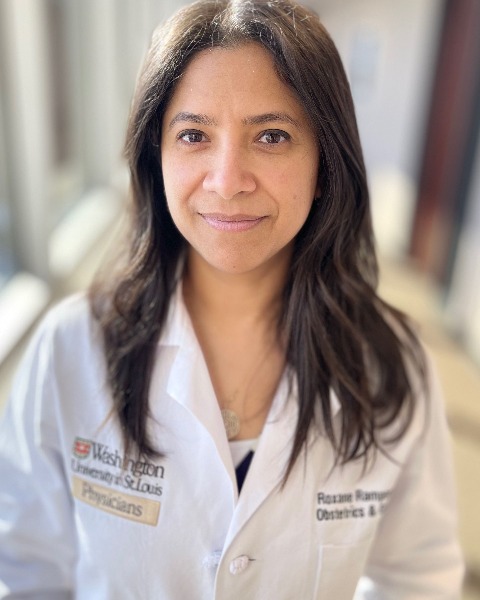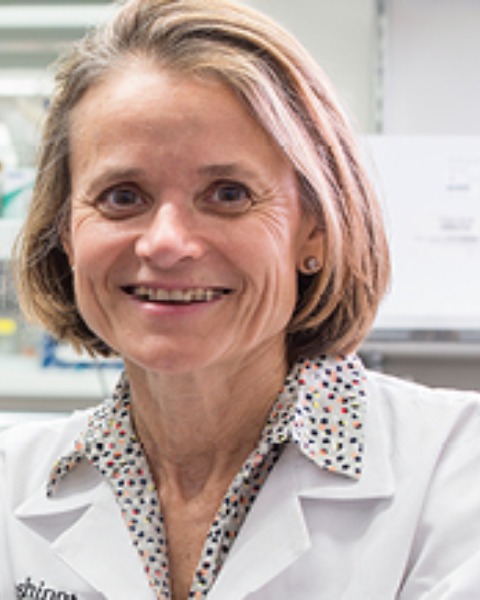Prematurity
Poster Session 3
(714) Neonatal Outcomes After Maternal versus Neonatal Transfers to a Level IV Perinatal Care Center

Drew M. Hensel, MD
Fellow
Washington University School of Medicine in St. Louis
St. Louis, MO, United States- JC
Janet Chandarlis, RN
Washington University in St. Louis
St. Louis, MO, United States - JH
Josh Hernandez, MPH
Washington University in St. Louis
St. Louis, MO, United States 
Nandini Raghuraman, MD MSCI (she/her/hers)
Assistant Professor
Washington University School of Medicine in St. Louis
St. Louis, Missouri, United States
Roxane M. Rampersad, MD (she/her/hers)
Associate Professor
Washington University School of Medicine in St. Louis, Barnes Jewish Hospital
St. Louis, MO, United States
Ebony B. Carter, MD, MPH (she/her/hers)
Associate Professor; Director, Division of Maternal Fetal Medicine
University of North Carolina at Chapel Hill
Chapel Hill, NC, United States
Anthony O. Odibo, MD (he/him/his)
Professor
Washington University School of Medicine in St. Louis
St. Louis, MO, United States
Barbara Warner, MD
Director, Division of Newborn Medicine
Washington University in St. Louis
St. Louis, MO, United States- JK
Jeannie C. Kelly, MD, FACOG, MS
Associate Professor
Washington University School of Medicine in St. Louis, Barnes Jewish Hospital
St. Louis, MO, United States
Primary & Presenting Author(s)
Coauthor(s)
To access the highest levels of maternal and neonatal care, inpatient transfer to Level IV Perinatal Care Centers (PCC) is sometimes needed. We sought to compare neonatal outcomes between maternal and neonatal transfers to a Level IV PCC.
Study Design:
We performed a retrospective cohort study of all maternal and neonatal transfers to our Level IV PCC from January – December 2021. Maternal transfers who delivered during the transfer admission, and neonatal transfers within 24 hours of birth were included. Neonates were excluded if neonatal resuscitation was declined. The primary outcome was composite neonatal morbidity which included: respiratory distress syndrome (RDS), mechanical ventilation, sepsis, grade 3-4 intraventricular hemorrhage (IVH), chronic lung disease, necrotizing enterocolitis, patent ductus arteriosus, and stage 3-4 retinopathy of prematurity. Secondary outcomes included mode of delivery, APGAR < 7 at 5 minutes, length of neonatal stay, and each composite morbidity component. Chi-square, fisher exact, Mann-Whitney U, and multivariate logistic regression were used as appropriate.
Results:
217 neonatal and 200 maternal transfers were included. Maternal transfers delivered at earlier gestational ages. Additionally, maternal transfers were less likely to have congenital anomalies, and more likely to receive antenatal steroids, be diagnosed with hypertensive disorders of pregnancy, and include racial minorities. For our primary outcomes, maternal transfers had significantly less odds of composite neonatal morbidity (aOR 0.79 [0.72-0.88]), specifically RDS (aOR 0.78 [0.70-0.86]), mechanical ventilation (aOR 0.84 [0.76-0.93]), and IVH (aOR 0.96 [00.92-0.99]), but their neonates had longer lengths of stay.
Conclusion:
Maternal transfer to a Level IV PCC, compared to neonatal transfers, are associated with significantly lower odds of neonatal morbidity. These results underscore the importance of sustaining and expanding robust maternal transport programs to best access both maternal and neonatal expertise at Level IV PCCs.


